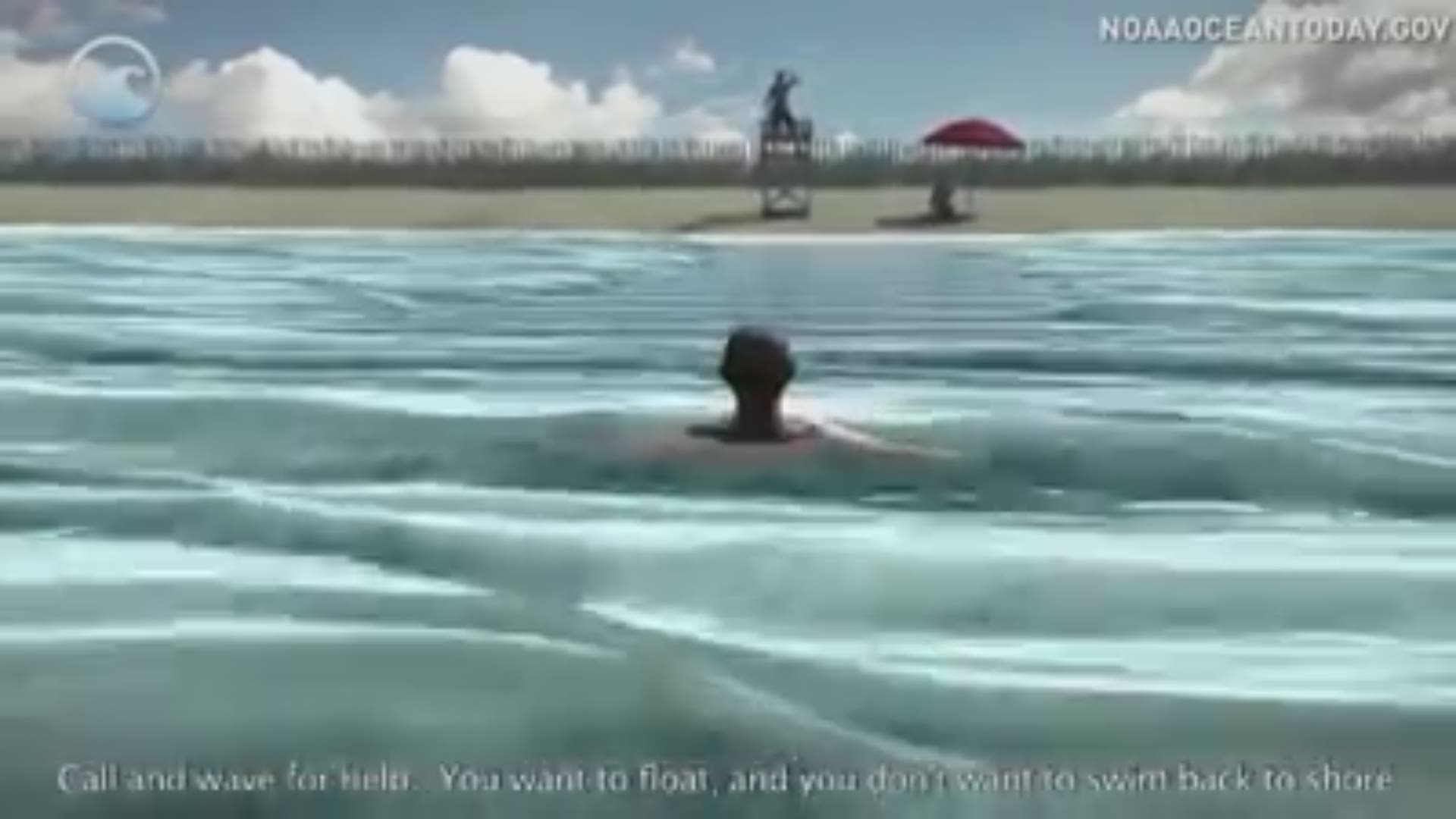HOUSTON — Lifeguards rescue tens of thousands of people from rip currents in the U.S. every year and about 100 people die in rip currents each year.
The currents are powerful channels of water flowing quickly away from shore. They occur most often at low spots or breaks in the sandbar, and near structures like jetties and piers.
Even strong swimmers can get into trouble if they get caught in a rip current. At speeds of up to eight feet per second, the currents can move faster than an Olympic swimmer, according to NOAA.
If it happens to you, yell for help and try not to panic.
"Relax and float. Don`t swim against the current," the National Weather Service advises. "If able, swim in a direction following the shoreline."
Before you head to the beach, always check your local beach conditions. Look at the wave forecast. If you have waves two to three feet high or greater, you could have strong rip currents.
Rip currents usually occur during low tide.
Once you're there, listen to the lifeguards and beach patrol. Pay attention to flags and signs.
If warning flags are up, adult swimmers should stay in water no more than waist deep, while non-swimmers and children should be kept along the surf line.
Swim near a lifeguard, if possible.

